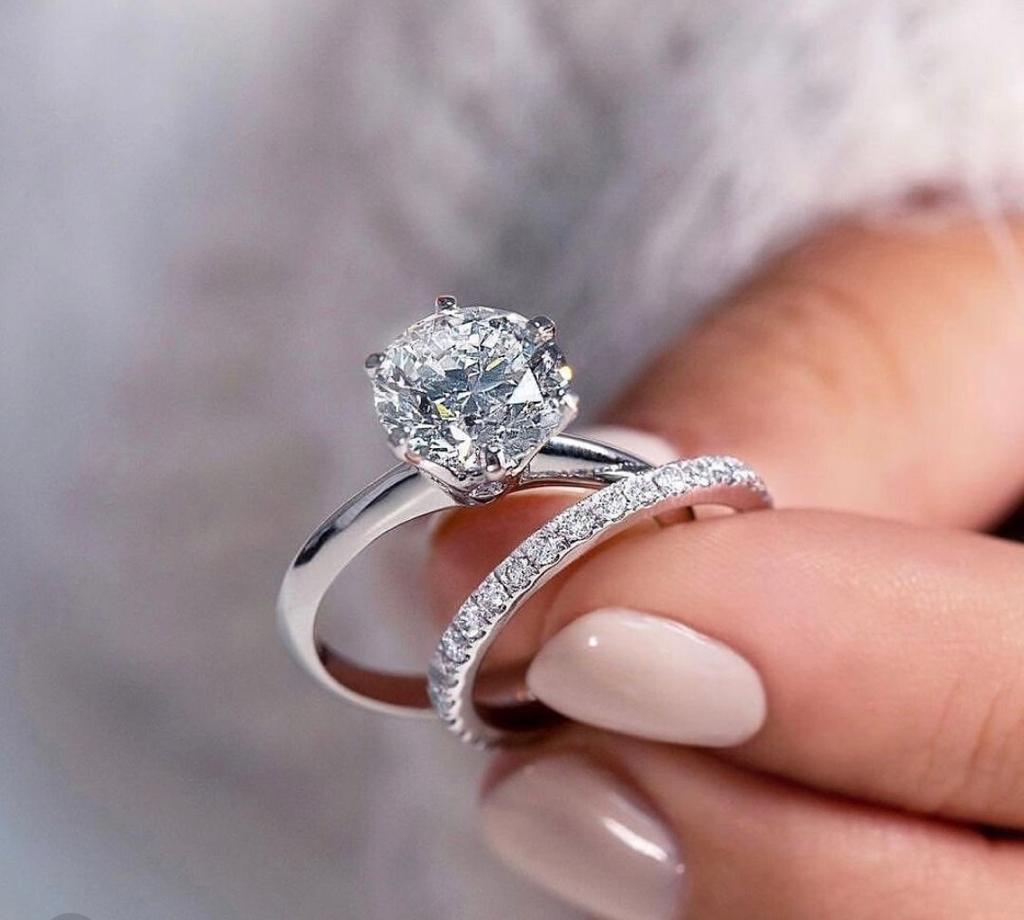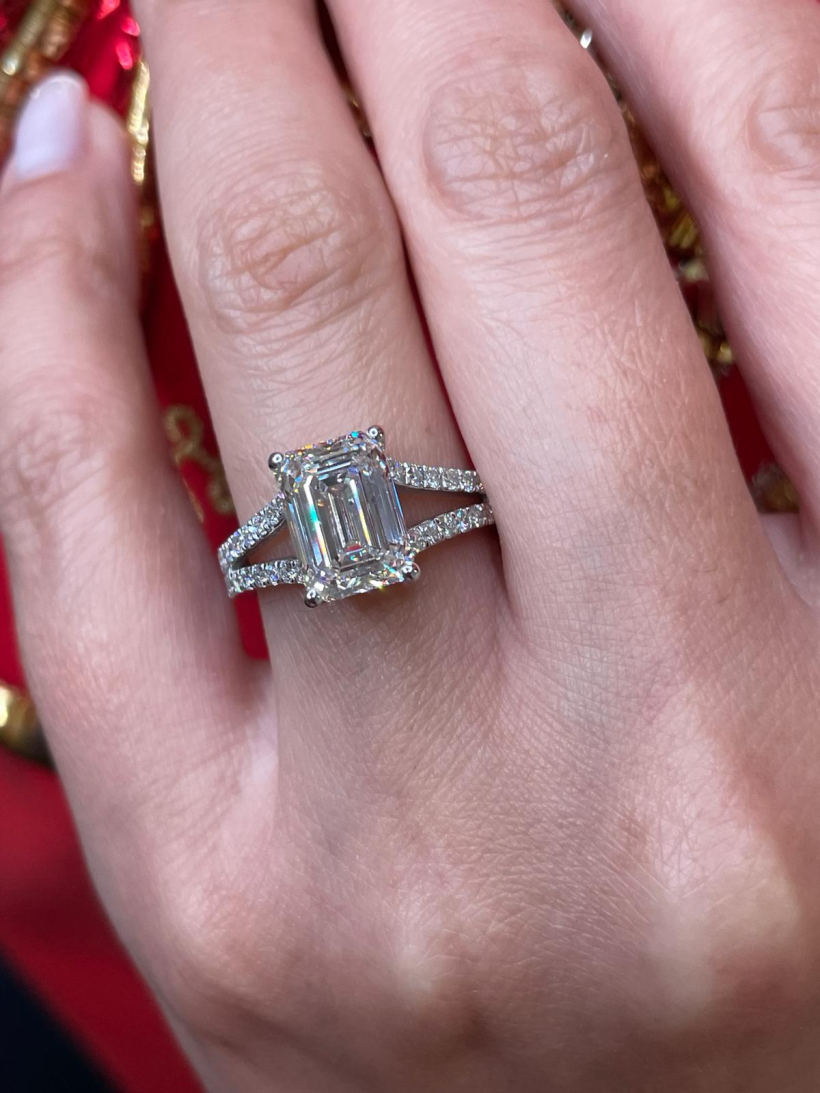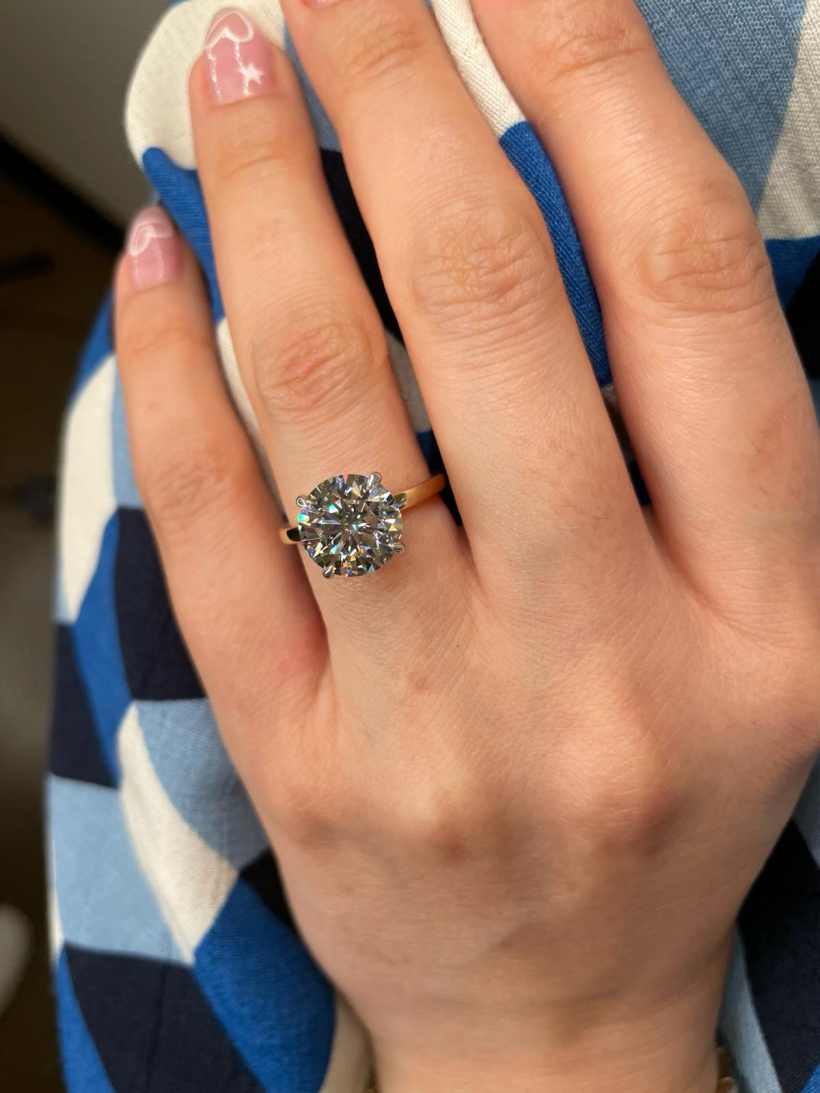White gold is one of the most popular alternatives to traditional yellow gold jewelry. However, people often feel confused about white gold because they don’t understand its relationship to other metals. Is white gold made of the same materials as yellow gold? What changes its color? Is white gold real gold? Finally, where can you find high-quality white gold rings at affordable prices?
In today’s guide, we will answer all of these questions and more, so let’s get started!
What Is White Gold?
White gold is a type of metal that is most often used in jewelry, and has become one of the most popular materials for wedding bands and engagement rings. Like most band materials, white gold is an alloy that combines gold with various white metals, including palladium, nickel, silver, and manganese. It is the combination of metals that gives white gold its distinctive color, which is frequently described as a combination of yellow gold and silver.
To better understand the composition of white gold, it’s necessary to look at some of the most common compositions used to create it:
- Alloy Composition - Pure, 24-karat gold is too soft for everyday use in jewelry, which is why it is almost always alloyed with other metals that have greater strength and durability. That said, the exact composition can vary. For example, 18 karat gold is composed of 75%, with the remaining 25% made up of other metals.
- Rhodium Plating - Jewelers typically use a layer of rhodium to enhance the shine and whiteness of white gold. Rhodium is a member of the platinum family, which gives it a bright, reflective surface. However, rhodium tends to wear away over the years, so white gold jewelry may need regular maintenance to maintain its luster.
- Relationship with Platinum - Though white gold is often coated with rhodium and resembles platinum aesthetically, the two metals have distinct properties. Platinum is denser, more durable, and naturally white, whereas white gold is specifically designed to mimic the appearance of platinum. White gold tends to be less expensive than platinum, which is yet another reason that it is so popular.
How Is White Gold Made?
It’s important to note that white gold is real gold, even though it does contain other metals. As previously mentioned, white gold is made when yellow gold is alloyed with one or more white metals. However, the process is very involved and requires the skills of expert jewelers and craftsmen. Here are some of the most important steps in the production process:
- Deciding on Karats - Jewelers must first decide on the desired purity (or karat) of the white gold they will create. The percentage of gold used is often at least half of the total composition, with the remainder made of of one or more white-colored metals.
- Choosing Alloy Metals - Alloy metals can each offer specific properties and affect the final color of white gold. Jewelers will often weigh the pros and cons of different metals. For example, palladium has a strong whitening effect, but it tends to be more costly. Alternatively, nickel is popular for its brightness and affordability, but it can cause an allergic reaction in some people.
- Mixing - Once the composition and metals have been chosen, the metals must be melted down in a furnace, allowing them to be mixed together.
- Crafting of Jewelry - After the alloy has been combined using precise proportions, jewelers will work the metal into bars that can be used to create different pieces of jewelry.
- Final Touches - Many white gold pieces are coated with rhodium plating before the last steps are taken, including setting stones and making any engravings.
Does White Gold Tarnish?
White gold is often preferred over alternatives like silver, as it does not naturally tarnish or lose its luster. However, this doesn’t mean that a white gold ring will not become less bright with time. There are various factors that can affect the long-term viability of white gold’s brightness. As discussed previously, rhodium plating enhances the white coloration and brightness of white gold, but it also causes the material to lose its brightness over a period of a few years. Rhodium plating must be regularly maintained and reapplied to avoid a dull appearance.
The composition of white gold alloy can also determine if and when it tarnishes. Certain alloys can react with different substances or conditions, which can lead to dullness or discoloration. A common example is nickel, which can react when it comes in frequent contact with certain lotions or perfumes. Even if nickel is not involved, chemicals like chlorine could potentially cause white gold to lose its desired color.
How To Clean White Gold
Cleaning white gold is similar to cleaning other types of gold, and it’s pretty easy to do without any prior experience. That said, you should still be careful to avoid causing any damage to the metal or gemstones. Here are a few steps to follow to clean your white gold without making any mistakes:
- Create a cleaning solution using just a few drops of dish soap and warm water. The water should not be hot, as this could inadvertently damage certain types of stones. You can also create a solution combining one part ammonia with six parts water.
- Soak your jewelry in the cleaning solution of your choice. There is no precise timeline, but you should generally allow your jewelry to soak for at least 15 to 20 minutes before taking it out.
- Gently clean your white gold using a soft-bristle toothbrush. This can help remove dirt that’s caught in more intricate designs and settings.
- Rinse the jewelry under lukewarm water. Make sure that any nearby drains are covered so that you don’t accidentally lose your jewelry during the cleaning process.
- Pat your white gold dry with a soft cloth or towel.
Remember that you can also get your white gold jewelry professionally cleaned, but this will be more expensive and is generally only needed if you’re worried about causing accidental damage to high-value pieces.
Do Diamonds Look Better In White Or Yellow Gold?
The superiority of white or yellow gold for diamond appearance comes down to personal preference. It can also depend on various factors, including the color of the diamond. If you have a colorless or near-colorless diamond, it may look great in combination with white gold. On the other hand, if you have diamonds with a greater presence of natural color, they may stand out better when set against a yellow gold band.
How To Buy Or Sell Used White Gold Diamond Engagement Rings
Whether you’re looking to acquire a white gold diamond engagement ring or sell one that you no longer want, it’s never been easier thanks to HYSTR. At HYSTR, we provide a large marketplace of buyers and sellers. As a buyer, you can choose from hundreds of white gold engagement rings of varying designs. Once you find one you like, you simply need to make an offer and come to an agreement on the price with the seller. From there, we verify the ring, and then it will arrive at your doorstep.
The process is similarly easy for sellers. Simply upload some pictures of your white gold ring, along with any relevant information and documentation you have (if applicable). As soon as your listing goes live, you’ll have access to thousands of interested buyers across the country. You can field different offers until you agree on a buyer and a price. Then, you’ll just need to send your ring to our certified gemologists for evaluation. As soon as the evaluation process is finished, you can expect your check in the mail. It’s really that easy!
We hope you enjoyed our white gold guide! Are you currently trying to buy or sell a used engagement ring? If so, be sure to contact HYSTR today!









